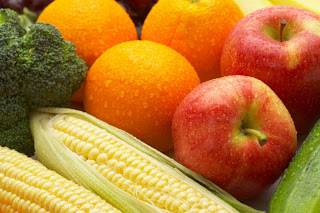Photo: thetype2diabetesdiet.com
You can catch diabetes from someone else.
Although we don't know exactly why some people develop diabetes, we know diabetes is not contagious. It can't be caught like a cold or flu. There does seem to be some genetic link in diabetes, particularly Type 2 diabetes. Lifestyle factors also play a part. If you do have diabetes, diabetes management is imperative, and now considerably easier with the help of mobile diabetes management.
People with diabetes can't eat sweets or chocolate.
If eaten as part of a healthy meal plan, matched with a medication regimen, or combined with exercise, sweets and desserts can be eaten by people with diabetes. They can be incorporated into any healthy eating plan.
Eating too much sugar causes diabetes.
Diabetes is not caused by eating too much sugar. It is a combination of genetic and lifestyle factors. However, being overweight does increase your risk for developing Type 2 diabetes. If you have a history of diabetes in your family, eating a healthy meal plan and regular exercise are recommended to manage your weight.
People with diabetes should eat special diabetic foods.
A healthy meal plan for people with diabetes is the same as that for everyone - low in fat (especially saturated and trans fat), moderate in salt and sugar, with meals based on whole grain foods, vegetables and fruit. Diabetic and "dietetic" versions of sugar-containing foods offer no special benefit. They can still raise blood glucose levels, are usually more expensive and can have a laxative effect if they contain sugar alcohols.
If you have diabetes, you should only eat small amounts of starchy foods, such as bread, potatoes and pasta.
Starchy foods are part of a healthy meal plan. What is important is the portion size. Whole grain breads, cereals, pasta, rice and starchy vegetables like potatoes, yams, peas and corn can be included in your meals and snacks. The key is portions. For most people with diabetes, having 3-4 servings of carbohydrate-containing foods per meal is about right. Whole grain starchy foods are also a good source of fiber, which contributes to a healthy body.
People with diabetes are more likely to get colds and other illnesses.
You are no more likely to get a cold or any other illness if you have diabetes. However, people with diabetes are advised to get flu shots. This is because any infection interferes with your blood glucose management, putting you at risk of high blood glucose levels and, for those with Type 1 diabetes, an increased risk of ketoacidosis.
Insulin causes atherosclerosis (hardening of the arteries) and high blood pressure.
Insulin does not cause atherosclerosis. In the laboratory, there is evidence that insulin can initiate some of the early processes associated with atherosclerosis. Therefore, some physicians were fearful that insulin might aggravate the development of high blood pressure and hardening of the arteries. But it doesn't.
Insulin causes weight gain and because obesity is bad for you, insulin should not be taken.
Both the UKPDS (United Kingdom Prospective Diabetes Study) and the DCCT (Diabetes Control & Complications Trial) have shown that the benefit of glucose management with insulin far outweighs the risk of weight gain.
Fruit is a healthy food. Therefore, it is ok to eat as much of it as you wish.
Fruit IS a healthy food. It contains fiber and lots of vitamins and minerals. Because fruit contains carbohydrates, it needs to be incorporated into your overall diabetes management plan . Talk to your dietitian about the amount, frequency and types of fruits you should eat, and about how fruit counts in your meal plan.
You don't need to change your diabetes regimen unless your A1C is greater than eight percent.
The better your glucose control, the less likely you are to develop complications of diabetes. An A1C in the sevens (7s), however, does not represent good control. The ADA goal is less than seven percent. The American Academy of Clinical Endocrinologists (AACE) recommends A1C goal of less than 6.5%. The closer your A1C is to the normal range (less than six percent), the lower your chances of complications. Talk with your healthcare provider about the best goal for you.
EOS Health takes diabetes and Diabetes Management
concerns very seriously, and with its introduction of its mobile diabetes management
application, you should too. Visit EOSHealth to learn of all the advancement in the world of diabetes management.
concerns very seriously, and with its introduction of its mobile diabetes management
application, you should too. Visit EOSHealth to learn of all the advancement in the world of diabetes management.
Source: ArticleTrader.com





















